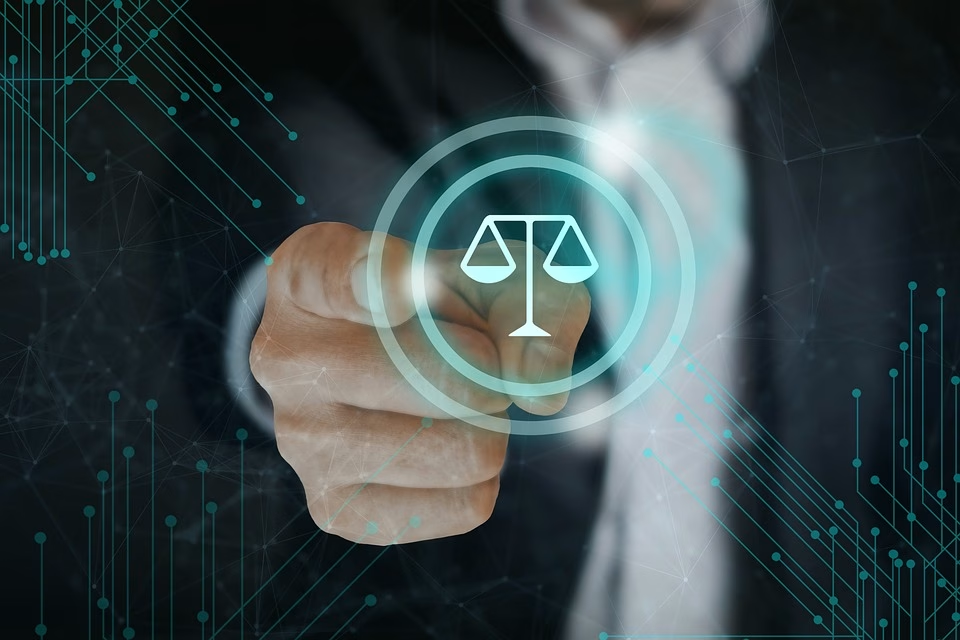Future-Proofing AI: How 2025 Regulations Will Shape the Tech Industry

In a landscape rapidly being reshaped by artificial intelligence and automation, a groundbreaking tool has emerged: NeuralFlow 5.0, developed by OpenAI. This next-generation AI framework promises to redefine how businesses approach automation by driving significant efficiencies and delivering smarter solutions tailored to their unique needs. As companies continue to explore AI-enabled strategies, understanding NeuralFlow 5.0’s capabilities is essential for leveraging this advancement effectively.
The Core Development: NeuralFlow 5.0
NeuralFlow 5.0 is a robust, multi-modal AI framework that integrates deep learning, natural language processing (NLP), and advanced automation features. It employs a sophisticated architecture that can process diverse types of data—text, images, and even structured datasets—simultaneously, making it an invaluable tool for businesses aiming to unlock insights from various formats.
Key Features of NeuralFlow 5.0:
- Enhanced Contextual Understanding: The latest iteration improves upon previous models with a deeper grasp of context, allowing for more nuanced responses and actions.
- Real-Time Automation Capabilities: Companies can streamline workflows by automating routine tasks in real time, reducing operational friction.
- Adaptive Learning: NeuralFlow 5.0 continuously learns and adapts based on user interaction, leading to a more personalized experience over time.
Practical Applications: How to Utilize NeuralFlow 5.0
Businesses, developers, and individuals can utilize NeuralFlow 5.0 in various prospects:
- Customer Support: Companies can integrate it into chatbots to enhance customer service interactions, providing quick and context-aware responses that significantly improve user experience.
- Content Creation and Management: For marketers, NeuralFlow 5.0 can assist in generating tailored content drafts, managing social media campaigns, and analyzing audience engagement with unmatched accuracy.
- Project Automation: Developers can leverage its API to automate software development processes, including code generation, testing, and deployment, thereby increasing productivity across tech teams.
Benefits & Challenges: Weighing the Pros and Cons
Benefits
- Increased Efficiency: Automation powered by NeuralFlow 5.0 can exponentially reduce the time spent on routine tasks, allowing human resources to focus on strategic initiatives.
- Personalization: Its ability to learn from data means interactions can be more relevant, fostering better customer relationships.
- Cost-Effectiveness: By automating processes, businesses stand to lower operational costs while boosting outputs.
Challenges
- Ethical Concerns: The deployment of AI technologies raises questions about bias, fairness, and transparency. Companies must navigate these complexities vigilantly.
- Job Displacement: As automation capabilities expand, the fear of job losses in certain sectors grows, necessitating careful workforce planning.
- Regulation Compliance: Adapting to evolving AI regulations is crucial for businesses looking to implement AI tools effectively and ethically.
Industry/Market Impact: The Ripple Effect of AI Adoption
NeuralFlow 5.0’s introduction signals a crucial turning point in AI and automation trends. Industries such as finance, healthcare, and marketing are increasingly inclined to adopt automation technologies to stay competitive. In finance, for instance, firms are using AI to predict market trends, while healthcare organizations are employing it to streamline patient management systems.
Gartner expects that by 2027, over half of all business tasks will be automated due to tools like NeuralFlow 5.0, pushing industries toward advanced operational capabilities and smarter data utilization.
Expert Insights: Voices from the Frontlines
According to Dr. Emily Carter, Chief AI Officer at OpenAI, "NeuralFlow 5.0 lays the groundwork for a new era in automation. By enhancing the efficiency of interacting with AI, we are enabling businesses to be more agile in a fast-evolving market.” Additionally, industry analysts suggest that organizations prioritizing the adoption of advanced AI tools stand at a distinct advantage compared to their slower-moving competitors.
What’s Next: The Future of AI and Automation
Looking ahead, we can expect to witness a growing integration of AI across sectors, particularly as tools like NeuralFlow 5.0 become more sophisticated. As standards evolve, businesses will need to adapt their strategies to harness the full potential of AI, with an emphasis on ethical frameworks and a balanced approach to workforce management.
Predictions for 2026 and Beyond:
- Increased collaboration between AI tools and human workers will lead to hybrid models of productivity.
- A rise in regulations concerning AI and data privacy will influence how companies develop and implement AI technologies.
- Industry-specific adaptations of AI tools will multiply, enhancing vertical-specific processes and outcomes.
SEO FAQs
What are the best AI tools in 2025?
NeuralFlow 5.0 tops the list, alongside other robust platforms such as Google’s Bard, Microsoft’s Azure AI, and Salesforce Einstein.
How is AI changing business automation?
AI enhances automation through improved data processing, personalized user experiences, and the ability to execute complex tasks with minimal human intervention.
What’s new with ChatGPT and OpenAI in 2025?
OpenAI is advancing ChatGPT with improved contextual comprehension and real-time processing, further enhancing user interactions.
Which industries benefit most from AI automation?
Finance, healthcare, marketing, and manufacturing are among the front-runners benefiting significantly from AI-driven automation strategies.
As AI technology continues to evolve, those organizations that stay ahead of the curve will undoubtedly reap substantial rewards in efficiency, cost savings, and customer satisfaction. By embracing innovation while navigating its complexities, industries can not only survive but thrive in an increasingly automated future.
🚀 Try Ancoia for FREE today and experience the power of business automation!
🔗 Sign up now and get a 7-day free trial



